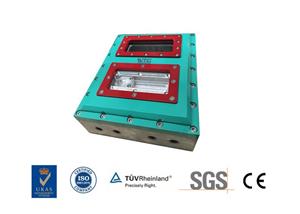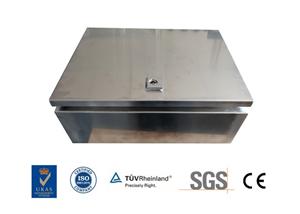Deep hole machining problem
The hole is an important surface on the box, bracket, sleeve, ring and disk parts, and it is also a surface often encountered in machining. In the case of the same machining accuracy and surface roughness requirements, machining hole than processing cylindrical surface is difficult, low productivity, high cost. This is because: the size of the tool is limited by the size of the hole being processed, so the rigidity of the tool is poor, can not use large cutting quantity; When machining holes, the cutting area is in the workpiece, the cutting fluid is not easy to enter the cutting area, chip discharge and heat dissipation conditions are poor, processing accuracy and surface quality are not easy to control.
The processing methods of holes include drilling, reaming, reaming, boring, drawing, grinding and finishing of holes, etc. In addition, the processing methods of holes that can replace conventional drilling include nesting drilling deep holes, heating drilling, laser drilling, electron beam drilling, electric spark drilling, etc. Parts of different materials, size, precision requirements are different, the choice of cutting tools is different; Efficiency requirements are different, mass production requirements are different, direct ratio is different, the choice of processing technology is different.
Deep hole machining
Deep hole machining is a field dominated by tools designed specifically for existing applications. Many different industries are involved in deep hole machining. Today, success in this machining field is often based on a mix of standard and specialized tool components that have experience in being designed as specialized deep hole tooling tools. These tools are equipped with extended, high-precision handles, supported and integrated reamers, which, combined with the latest cutting groove and blade materials and efficient coolant and chip control, deliver the highest quality with the highest penetration and machining safety.
Deep hole processing is difficult
(1) Can not directly observe the cutting situation, only by listening to the sound, see the chip, observe the machine load, oil pressure and other parameters to judge the chip removal and drill wear.
(2) cutting heat is not easy to get out.
(3) Chip removal is difficult, such as chip blocking will cause damage to the bit.
(4) Because of the length of the drill pipe, poor rigidity and easy vibration, it will lead to the hole axis is easy to skew, affecting the machining accuracy and production efficiency.
Precautions for deep hole processing
(1) Deep hole processing operation points: spindle and tool guide sleeve, tool rod support sleeve, workpiece support sleeve and other center line coaxial degree should meet the requirements; Cutting fluid system should be smooth and normal; There should be no central hole on the machining end face of the workpiece, and avoid drilling on the inclined plane; Chip shape should be kept normal to avoid the formation of straight strip chip; Machining through holes at a high speed. When the bit is about to be drilled through, slow down or stop to prevent damage to the bit.
(2) deep hole machining cutting fluid: deep hole machining process will produce a lot of cutting heat, and is not easy to spread, the need to supply sufficient cutting fluid lubrication cooling tool. Generally choose 1:100 emulsion or extreme pressure emulsion; When high machining accuracy and surface quality or toughness materials are needed, extreme pressure emulsion or high concentration extreme pressure emulsion is selected. The motion viscosity of cutting oil is usually selected (40℃) 10 ~ 20cm2/s, and the flow rate of cutting fluid is 15 ~ 18m/s. When the machining diameter is small, the cutting oil with low viscosity is selected. For deep-hole processing requiring high precision, the cutting oil ratio can be 40% extreme pressure vulcanized oil +40% kerosene +20% chlorinated paraffin.
(3) Precautions for using deep hole drill:
A. The end face of the workpiece is perpendicular to the axis line of the workpiece to ensure reliable sealing of the end face.
B. Pre-drill a shallow hole on the workpiece hole position before formal machining, which can play a guiding and centering role during drilling.
C. In order to ensure the service life of the tool, it is best to use automatic cutting tool.
D. If the guide element in the fluid feeder and the movable center support is worn, it should be replaced in time so as not to affect the drilling accuracy




